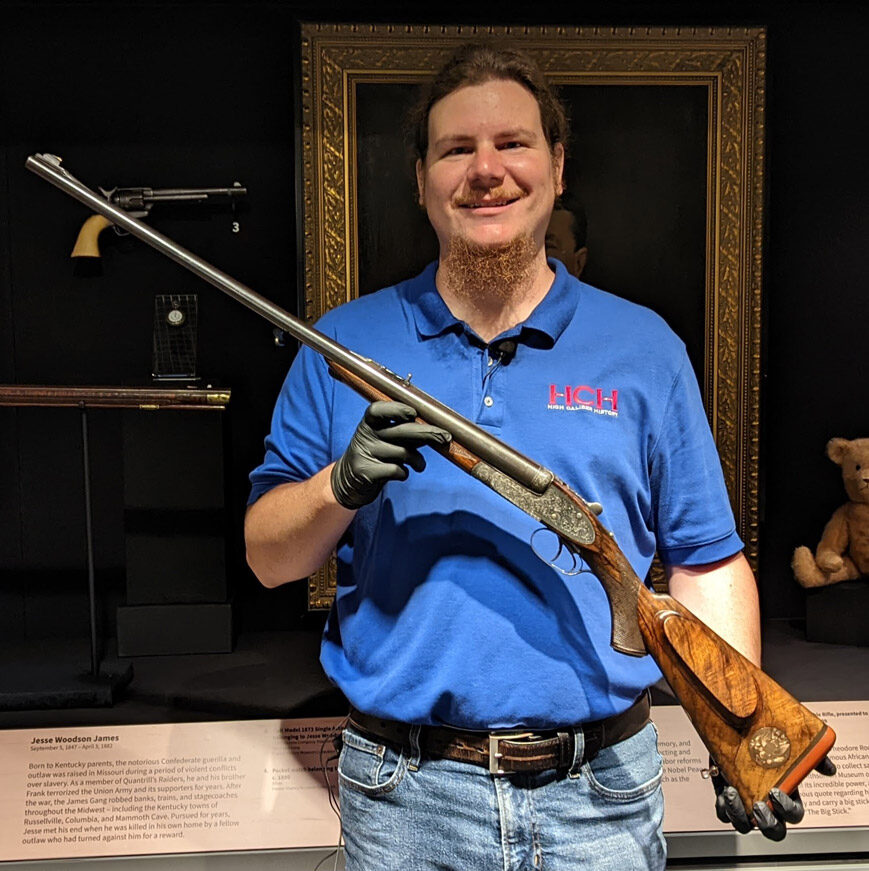
When it comes to shotguns that make you do a double take, the High Standard Model 10 stands on its own. With its bullpup configuration, integrated flashlight and unmistakably space-age silhouette, the Model 10 looks more like a movie prop than a real firearm. But this wasn’t a Hollywood fever dream; it was a serious attempt to arm American law enforcement with a futuristic solution to an age-old problem.
A Lawman’s Vision
The Model 10 began as an idea from Santa Monica police officer Alfred Crouch in the 1950s. He envisioned a compact, high-powered shotgun that could be deployed quickly from a patrol car without taking up the space of a traditional long gun. Crouch modified existing High Standard semi-auto shotguns and placed them into a bullpup housing. Simply put, a bullpup configuration is one where the trigger is in front of the receiver. That idea eventually caught the attention of High Standard Manufacturing. The company developed a commercial model in the late 1960s.
High Standard Model 10 Innovation
The original Model 10A, introduced in 1967, featured a fixed carry handle with an integrated Kel-Lite flashlight. This is an early nod toward what we now consider tactical gear. It had an 18-inch barrel and a fixed stock design that made it compact and maneuverable. This is especially true for vehicle-bound officers.
However, it wasn’t perfect. The flashlight was hardwired into the housing. Dead batteries often left it useless. Add a trigger linkage system that was, frankly, more complex than it needed to be, and reliability issues began to surface.
In response, High Standard released the Model 10B in the early 1970s. It is this version of the shotgun that is being offered in the July collection of Collector’s Elite Auctions. This improved version came with a folding carry handle, removable flashlight mount and redesigned charging handle. The goal was to address the practical shortcomings of the 10A while keeping the aggressive, compact footprint.
A Bullpup Ahead of Its Time
While the bullpup layout gave the Model 10 a short overall length (around 27 inches), the configuration introduced quirks. The trigger felt spongy due to the long linkage bar. The semi-automatic action was also sensitive to the kind of ammunition that was used. High-brass loads were fine, but lighter shells could result in jams.
Despite those challenges, the Model 10 found some use in police departments. It even reportedly saw limited military use, including with Argentine forces in the Falklands War. Still, its complexity, maintenance issues and relatively high cost kept it from widespread adoption.
Collector’s Gem
Today, the High Standard Model 10 isn’t just a curiosity, it’s a collector’s conversation piece. It represents a bold moment in American firearms history when innovation wasn’t afraid to look weird. Whether it’s the 10A with its integrated light or the sleeker 10B with improved handling, these guns command interest at auction. This is especially true when complete and in good condition. That’s why you shouldn’t sleep on the opportunity to bid on the one in the July collection.
If you’re a collector who appreciates oddball ingenuity and forward-thinking design, the Model 10 is a must-have. It might not be the most practical shotgun in your safe, but it’ll definitely be the one everyone wants to talk about.
About the Author
-
Logan Metesh is an arms historian with a focus on history and development. He has a degree in historic preservation and has worked for the National Park Service and the Smithsonian Institution. The ease with which he can recall obscure historical facts and figures makes him very good at Jeopardy!, but exceptionally bad at geometry. Over the years, he has contributed to multiple books and written hundreds of articles for different publications. He is the owner of High Caliber History LLC and the host of the No Lowballers Podcast.
View all posts
